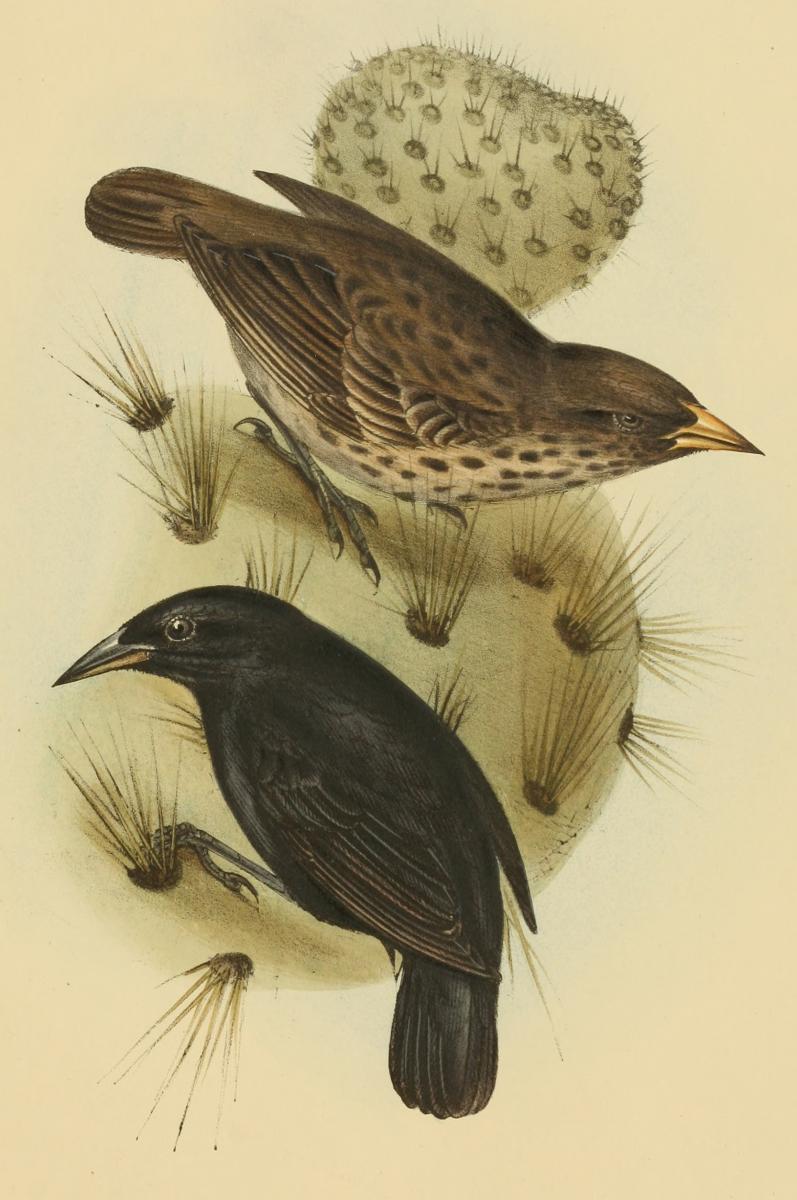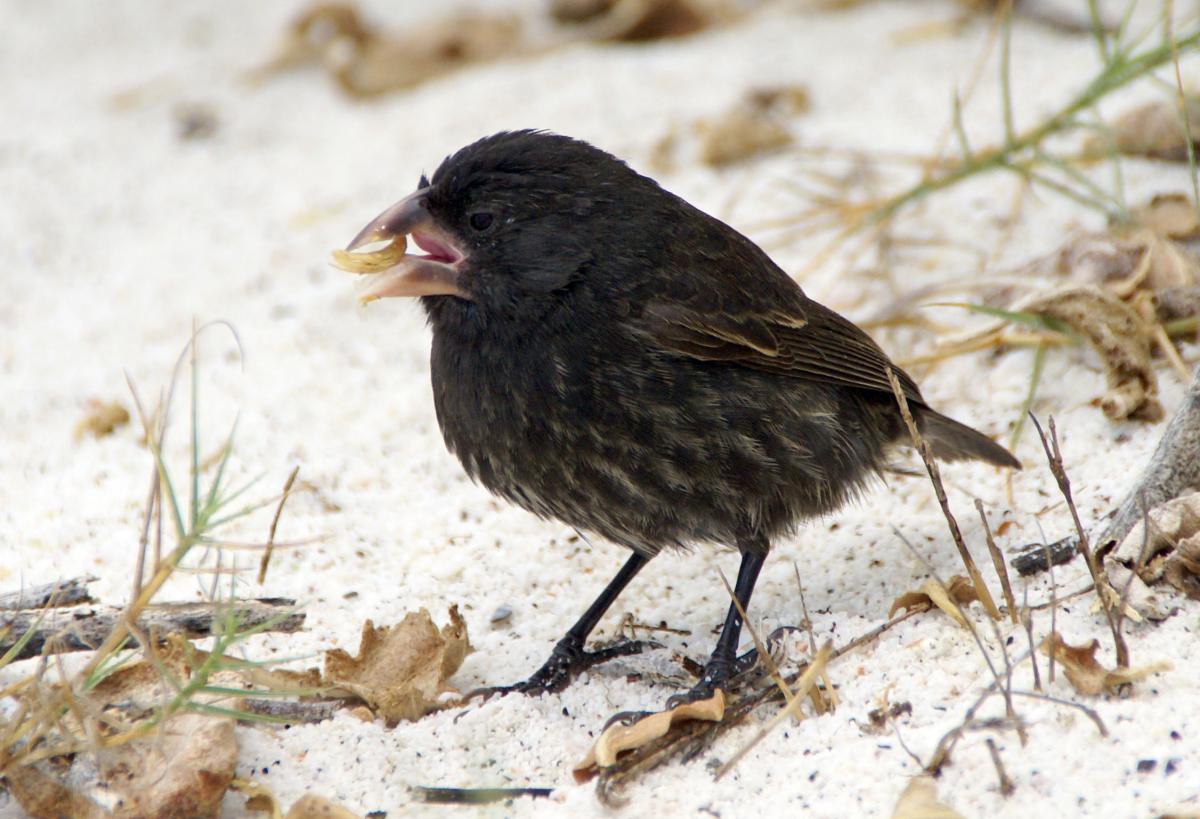The subject of our celebratory Fossil* Friday last week was not a fossil, true, but it was an appropriate choice for Darwin Day. I tasked you with naming the common and scientific names of the photographed finch and also completing a relevant quotation, and John Macdonell met the challenge! Congratulations, John!
 Our special Darwin Day finch was Geospiza scandens, the common cactus finch, one of the more than twenty species of bird that Darwin brought back with him from the Galápagos. The story of these finches has been twisted with time. People, popular books, and even museum displays love to suggest that Darwin had a kind of eureka! moment when he came across the finches, but this simply isn’t true. For one thing, he didn’t know they were all finches! Rather, he thought they were a mix of small birds such as blackbirds, wrens, and mockingbirds. Darwin had no sense of their relationships and significance until after he returned to England and ornithologist John Gould told him that all of these bird species were actually all finches, closely allied with mainland South American species, but new to science.
Our special Darwin Day finch was Geospiza scandens, the common cactus finch, one of the more than twenty species of bird that Darwin brought back with him from the Galápagos. The story of these finches has been twisted with time. People, popular books, and even museum displays love to suggest that Darwin had a kind of eureka! moment when he came across the finches, but this simply isn’t true. For one thing, he didn’t know they were all finches! Rather, he thought they were a mix of small birds such as blackbirds, wrens, and mockingbirds. Darwin had no sense of their relationships and significance until after he returned to England and ornithologist John Gould told him that all of these bird species were actually all finches, closely allied with mainland South American species, but new to science.
With this exciting information, Darwin set to trying to reconstruct the biogeography of the finches. The conclusions he drew were used in support of his theory of natural selection. In the second edition of the Journal of Researches (better known as The Voyage of the Beagle), Darwin wrote: “Seeing this gradation and diversity of structure in one small, intimately related group of birds, one might really fancy that from an original paucity of birds in this archipelago, one species had been taken and modified for different ends.”
 The common cactus finch is one half of the dramatis personae of one of the many really neat biogeographical stories of the Galápagos. The other half is its cousin, the large cactus finch (which is, well, larger). Both species are closely associated with the endemic prickly pear cactus; they eat primarily its seeds and those of other small-seeded flowers, with a few insects thrown in for good measure. So similar are their niches, in fact, that wherever one species is, the other is absent. It’s niche partitioning, and competitive exclusion in action!
The common cactus finch is one half of the dramatis personae of one of the many really neat biogeographical stories of the Galápagos. The other half is its cousin, the large cactus finch (which is, well, larger). Both species are closely associated with the endemic prickly pear cactus; they eat primarily its seeds and those of other small-seeded flowers, with a few insects thrown in for good measure. So similar are their niches, in fact, that wherever one species is, the other is absent. It’s niche partitioning, and competitive exclusion in action!
Speaking of the prickly pear cactus, that was the key to the quote I asked you to complete. Here it is the expanded quote, taken from Jonathan Weiner’s famous book, The Beak of the Finch: A Story of Evolution in Our Time (1994):
Cactus finches do more with cactus than Plains Indians did with buffalo. They nest in cactus; they sleep in cactus; they often copulate in cactus; they drink cactus nectar; they eat cactus flowers, cactus pollen, and cactus seeds. In return they pollinate the cactus, like bees.
Does anyone have a favorite Galápagos finch, finch-related lesson plan, or finch-adjacent quotation/piece of art/tchotchke? Do share!
Are you a teacher and want to tell us about an amazing free resource? Do you have an idea for a Misconception Monday or other type of post? Have a fossil to share? See some good or bad examples of science communication lately? Drop me an email or shoot me a tweet @keeps3.

